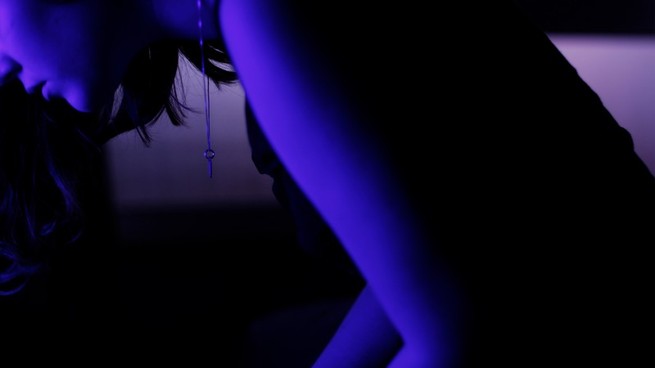How to Write About the Trump Years
5 min read
This is an edition of the Books Briefing, our editors’ weekly guide to the best in books. Sign up for it here.
One of journalists’ tasks is to write something of “a first draft of history,” tracking and analyzing significant moments practically as they happen. For authors of books, the goal is a little different—finding the right distance and perspective while still conveying the urgency of events; this is history’s more polished second draft. This week, we published a review of the New Yorker writer Emily Witt’s memoir Health and Safety, which, through a deep dive into the author’s experimentation with drugs, tries to express what it was like to live during Donald Trump’s presidency, a time when what many Americans believed to be a shared political reality was challenged in unprecedented ways. In an interview with Witt, New York magazine called the book, published eight years after he was first elected, “the first great memoir of the Trump years.”
First, here are three new stories from The Atlantic’s Books section:
- The anti–rock star
- “The Fog,” a poem by Howard Altmann
- The Rooneyverse comes of age
Chronicling events as they’re happening is valuable: These writings will give future readers a sense of life during a particular era, and in the meantime, they can perhaps help their contemporary readers feel less alone. But how can one person accurately capture such a complex, layered, and emotionally fraught time, especially when no two people could possibly have the same experience? Witt’s memoir suggests that perhaps the key is to look inward. As my colleague Jeremy Gordon writes, Witt was “shocked and unsettled by Trump’s presidential victory in 2016, which occasioned a sense of futility that no gathering of pink-hat-wearing protesters could help alleviate.” She started to feel disillusioned with reporting, even as she was writing stories about serious topics, such as the Parkland shooting and the rise of right-wing militias. Feeling that she didn’t have anything to say about those subjects, she decided to “turn the analytical lens on herself.” Her foray into drugs was, as Gordon puts it, an attempt to “harness journalism toward something more useful than chronicling national decay.”
When the coronavirus pandemic broke out, artists faced yet another world-changing event—and had plenty of free time in which to respond. Within a year or two, a plethora of novels that were glancingly (or obviously) inspired by COVID started to hit shelves. To name just two that we covered: Elizabeth Strout’s Lucy by the Sea, in which Strout’s popular protagonist Lucy Barton isolates with her ex-husband in Maine during the pandemic, and Hari Kunzru’s Blue Ruin, which follows a once-promising artist who is working as a delivery driver when COVID hits. The most valuable, to me, were the ones that acknowledged that there was no universal theory of suffering or loss to be gleaned from the pandemic. Witt’s book, for example, sits with discomfort, uncertainty, and her ultimate conclusion that one individual can do very little to change a world that seems to be falling apart. In a way, that’s the wisest takeaway from recent years: You can’t draw tidy conclusions from history when history doesn’t stop.

Can the Right Drugs Fix Your Life?
By Jeremy Gordon
A writer overwhelmed by a world gone mad takes a headlong dive into drugs and dancing. Results are mixed.
Read the full article.
What to Read
Journal of a Solitude, by May Sarton
Sarton’s aptly titled Journal of a Solitude records the personal and professional preoccupations of a queer, middle-aged writer from her voluntary isolation in the remote village of Nelson, New Hampshire, where she’s retreated in hopes of “cracking open the inner world again.” The entries are by turns philosophical and mundane: Sarton’s creative life is intimately influenced by examinations of her own emotional landscape and close observations of her house and garden. Her attitude toward solitude is strikingly ambivalent, as her freedom from social and professional obligation is tempered by daily confrontations with the inner demons from which there is no distraction, no defense. “Here in Nelson I have been close to suicide more than once,” she writes, “and more than once have been close to a mystical experience with the universe.” Sarton’s nocturnal life, like her poetry, ebbs and flows with the seasons and her changing frames of mind—sleep is a rich indulgence, but one that eludes her for days at a time. A rich and sensuous account of the life of the mind, Journal of a Solitude makes a long night feel shorter, by savoring the pleasures of loneliness as much as the anguish. — M. L. Rio
From our list: Seven bedside-table books for when you can’t sleep
Out Next Week
📚 Defectors, by Paola Ramos
📚 Undivided, Hahrie Han
📚 America First, by H. W. Brands
Your Weekend Read

The Dating-App Diversity Paradox
By Faith Hill
Studies suggest that couples who meet online, alternatively, are more likely to cut across race, education, and religious boundaries. That’s not to say that romantic relationships—online or off—are totally integrated by any of those measures. When it comes to interracial marriages in the United States, for example, Lundquist told me that “if you were to just sort of put everyone in a bag and randomly assort everyone, the rates of interracial pairings would be three to five times higher than what they actually are.” But such unions are more common than they used to be. When the Supreme Court case Loving v. Virginia legalized interracial marriage in 1967, interracial couples made up 3 percent of the country’s newlyweds; now they’re up to nearly 20 percent—with spikes not long after the introduction of Match.com in 1995 and Tinder in 2012.
Read the full article.
When you buy a book using a link in this newsletter, we receive a commission. Thank you for supporting The Atlantic.
Sign up for The Wonder Reader, a Saturday newsletter in which our editors recommend stories to spark your curiosity and fill you with delight.
Explore all of our newsletters.



